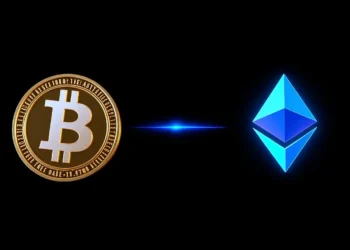Introduction
Every year, billions of dollars are sent from one country to another. These remittances are more than just money—they are lifelines for families and boost economies worldwide. However, sending cash across borders isn’t always easy. Traditionally, it means high fees, slow transfers, and many rules to follow. This makes many feel stuck, especially those who need quick, cheap ways to get money home. That’s where blockchain technology steps in, promising a new way to move money faster and at lower costs. This article breaks down how blockchain is changing remittances and making international money transfer better for everyone.
Understanding Remittances and Their Global Impact
The Scale and Importance of Remittances
Every year, over $600 billion is sent as remittances around the globe. Countries rely on these funds to help families pay for food, housing, and education. For many, remittances are a main source of income and a key to lifting families out of poverty. Without them, many would struggle to survive.
Traditional Remittance Systems and Their Limitations
Sending money the old way has problems. Fees can be very high—sometimes up to 10% of the transfer. Hidden costs and extra charges make it even worse. Transfers often take days or weeks to arrive. Plus, the process isn’t always clear, and adding strict rules means security concerns. These issues make sending money frustrating for both sender and receiver.
The Need for Innovation in Remittance Services
People want faster, cheaper solutions without giving up security. As digital currencies and blockchain platforms grow, more are looking for ways to send money that are simple, quick, and safe. The demand for better international transfers is clear, and blockchain offers promising answers.
Blockchain Technology: The Foundation for Change
What is Blockchain and How Does It Work?
Think of blockchain as a record book that anyone can see but no one can change. It’s a system of digital blocks linked together in a chain. This setup is decentralized, meaning no single person controls it. Instead, many people keep a copy, making it almost impossible to cheat. Transparency, security, and trust are built into the system.
Benefits of Blockchain in Financial Transactions
Using blockchain cuts costs by removing middlemen. It speeds up transfers from days to minutes. Plus, its security features help prevent fraud and errors. Blockchain keeps a clear record of every transaction, which users can see at any time.
Examples of Blockchain Platforms in Remittance Services
- Ripple (XRP): Designed to make bank transfers faster and cheaper, Ripple is used by many banks for cross-border payments.
- Stellar (Lumens): Focuses on low-cost transfers, especially for those without bank accounts, making international remittances accessible to everyone.
- Emerging Platforms: Other new services are using blockchain to create more options for quick, cheap remittance.
Advantages of Blockchain for Remittance Senders and Recipients
Lower Costs and Increased Efficiency
Sending money with blockchain can save a lot on fees. Companies using Ripple or Stellar report savings of up to 80%. These savings let more money reach families, rather than going to service charges.
Faster Transaction Times
Instead of waiting several days, transfers often arrive within minutes. For example, a family sending money during an emergency can see their funds in seconds. Several case studies show how blockchain simplifies the process, turning days into moments.
Improved Transparency and Security
Blockchain creates a clear trail of every transaction. Users can check their transfer history at any time. This reduces the chance of mistakes and fraud, making the entire process more trustworthy.
Financial Inclusion and Accessibility
Many people in poor or rural areas do not have bank accounts. Blockchain helps extend financial services to these populations through mobile wallets and micro-remittances. This gives more people access to money transfer services, no matter where they live.
Challenges and Considerations in Implementing Blockchain Remittances
Regulatory and Compliance Issues
Different countries have unique rules to fight money laundering and protect buyers. Navigating these laws is tricky. Regulations can slow down or block blockchain-based remittances, especially during early adoption.
Technical and Adoption Barriers
Blockchain networks face problems controlling huge amounts of data, causing delays and congestion. Not everyone understands how blockchain works or trusts it. Educating users is crucial for wider acceptance.
Security Risks and Fraud Prevention
While blockchain is secure, vulnerabilities exist. Hackers could target the system or users might fall for scams. Best practices include strong security measures and regularly updating systems to prevent breaches.
Future Outlook and Ongoing Developments
Blockchain has big potential, but it still needs to become mainstream. Governments and companies are starting to develop rules to support safe, effective use. As technology improves, so will the options for international remittances.
Practical Tips for Consumers and Remittance Providers
For Consumers
- Use well-known, reputable blockchain remittance services.
- Always double-check your transfer details before sending.
- Keep your digital wallet secure with strong passwords and two-factor authentication.
For Remittance Companies
- Integrate blockchain solutions smoothly into existing systems.
- Educate your users about how blockchain makes transfers better.
- Stay updated on changing rules and regulations to stay compliant.
Conclusion
Blockchain is reshaping how money moves across borders. It cuts costs, quickens transfers, and makes transactions safer. More people than ever can send and receive money easily and securely. As blockchain continues to grow, it will open new doors for financial inclusion and boost global economies. Embracing this tech now means more efficient, fair, and accessible remittance services in the future. Let’s not wait—step into the world of blockchain today and help connect the world like never before.
Join Us : Twitter | Website | GitHub | Telegram | Facebook | YouTube

























